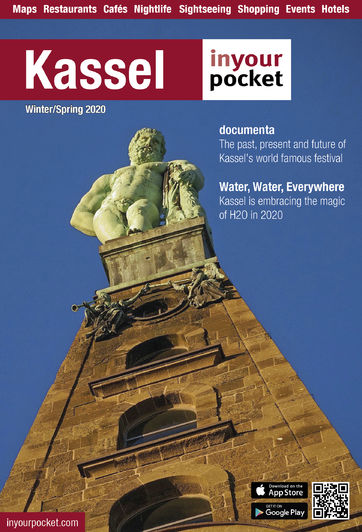The Wonderful World of Kassel's documenta Festival
more than a year ago14 editions of the festival have passed with the next one scheduled for 2022, and the documenta contemporary art festival has proven immensely important for the city and the international art world. Attracting many hundreds of thousands of visitors to Kassel for 100 days every five years, it has managed to inspire and infuriate generations of artists and art-lovers with its themed editions composed in by a changing set of curators. The last documenta held in 2017 was a great success, but then what else is expected from this magnificent artistic celebration?
The 15th edition is scheduled to run over 100 days in the summer of 2022, with Indonesian artistic collective Ruangrupa already announced as the artistic director. This is no small announcement, as it will mark the first time that a collective has taken charge of the event, not to mention the first Asian curator of this famous festival. Ruangrupa — formed in Jakarta in 2000 — have already spoken of their desire to use the festival for something bigger than art, to help heal the wounds of today by encouraging and developing partnerships. It was this desire to go beyond the aesthetic that got the Indonesian collective the position, with documenta’s director making special mention of their commitment to participation and community. We cannot wait to see what the 15th documenta looks like, but we’ve got a couple of years yet.
In the meantime, we have a new permanent exhibition to enjoy. Long overdue, Kassel is now home to an exhibition telling the tale of documenta and continuing its good work on a daily basis, encouraging visitors to actively participate with some of the most engaging artwork of modern times. Head to the city’s Neue Galerie to experience an intricate love letter to Kassel’s artistic treasure.
About documenta
The documenta festival's fascinating history starts with a garden show and an artist and art academy lecturer from Kassel named Arnold Bode. Bode discovered that there was an opportunity to showcase art during the Bundesgartenschau, Kassel's first post-war international horticultural show in 1955. The semi-ruined Fridericianum museum, mainland Europe's first dedicated museum building, was the perfect venue for his selection of art formerly banned by the Nazi regime, and with an exhibition of works by Josef Albers, Paul Klee, Max Beckmann, Wassily Kandinsky and others he attracted an amazing 130,000 visitors. Sculptures by Henry Moore and mobiles by Alexander Calder amazed the visitors, and many German artists who had been shunned since the 1930s came to exhibit new works in Kassel.
Kassel soon agreed to repeat the festival every few years – and the success of documenta was born. The 1959 edition saw Bode focus on contemporary abstract expressionism, and by 1964 documenta was extended to be a 'museum for 100 days' and become internationally renowned for its leading role in presenting new trends in art – in this case Pop Art. Protest, politics, multimedia, the traditional media of painting and sculpture, war, violence and globalisation all were themes dominating the next editions of documenta, and German art demigod Joseph Beuys became a permanent guest artist – famously taking the festival out of the museum buildings and planting his 7000 oak trees across Kassel for documenta in 1982.
By the 1992 edition, documenta was well-established, attracting 600,000 visitors. Ai Wei Wei staged a memorable installation with his 2007 work Fairytale. He invited 1,001 Chinese visitors and documented their journey and impressions, giving each of them a Ming dynasty chair to take home. The 2012 documenta 13 festival was also a great success, with an optimistic outlook and great works by among others William Kentridge and Theaster Gates. Curator Carolyn Christov-Bakariev stressed she believed that art will change everything for the better, and defended the equality of all life. Her documenta was the first to go abroad, with parallel exhibitions and artworks by 300 artists in Kabul, Cairo and Banff, Canada. This trend continued in 2017, with work simultaneously exhibited in the iconic Greek capital, Athens.
The documenta festival highlights the newest developments in sculpture, painting, performance, film, photography and installation under a new curator and new theme and concept every 5 years, allowing artists to experiment, discuss and develop themselves and their concepts. Over the years the event has become more international, with artists from other continents participating and weakening the Eurocentric approach to art that was criticised early on by Joseph Beuys. The audience is often asked to actively participate and provide thoughts and feedback during their visit, though some question if the festival's abstract streak is too much for the crowds that come to be inspired by the festival. But perhaps it's a good thing to be simply dazzled, confused and bowled over every five years – giving plenty of time to prepare for the next edition.





Comments